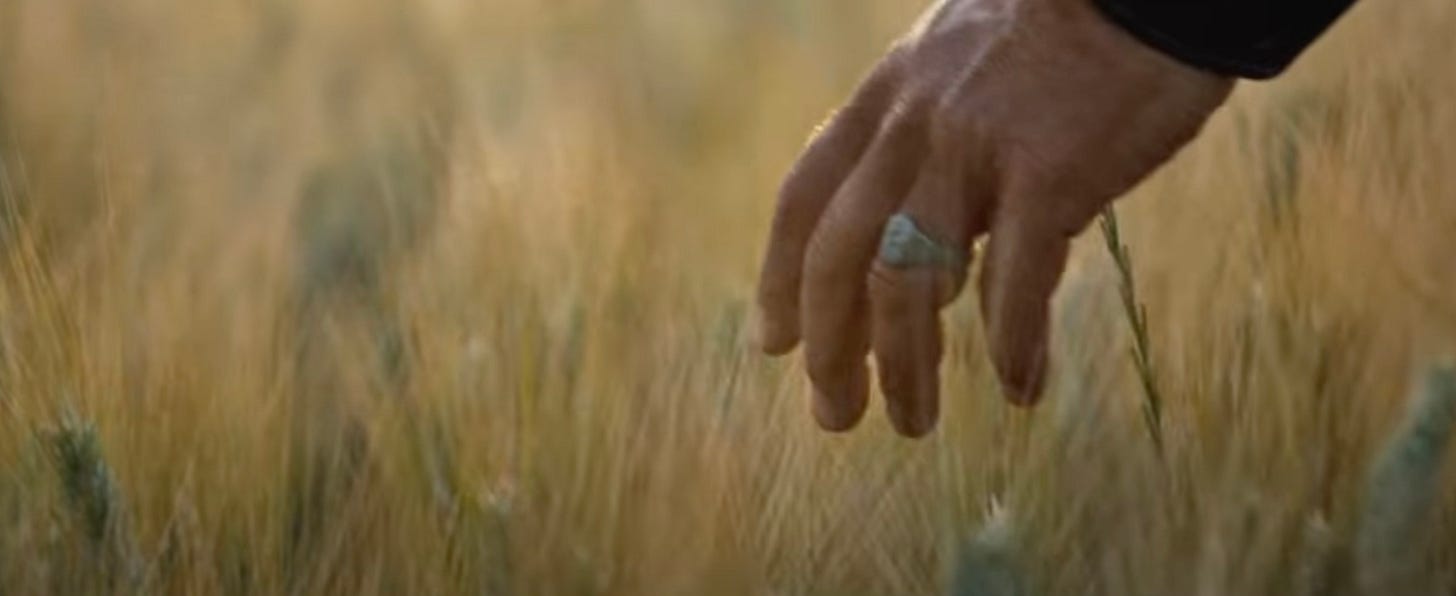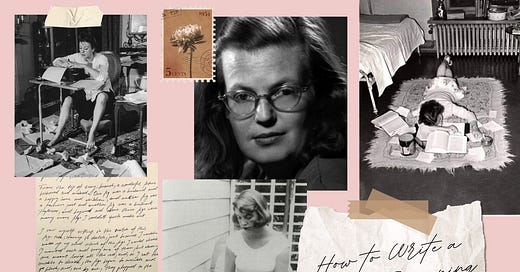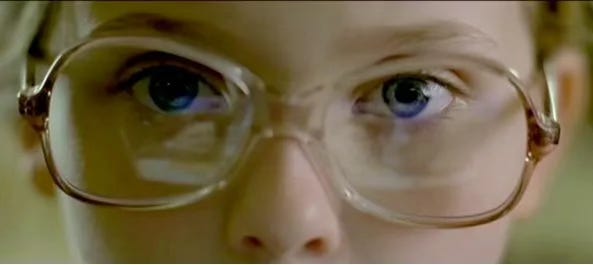How to Write a Strong Beginning
great first lines, advice from Jeff Vandermeer, and my own editorial process
In this month’s writing craft lesson, we’ll explore some amazing first lines and paragraphs and then delve into how you too can write beautiful beginnings for your own stories, with advice from the amazing Jeff Vandermeer and examples of how I edited some of my own beginnings to make them stronger. Read to the end for a writing prompt!
Beautiful Beginnings:
“It was a queer, sultry summer, the summer they electrocuted the Rosenbergs, and I didn’t know what I was doing in New York.” - The Bell Jar, Sylvia Plath
“It was inevitable: the scent of bitter almonds always reminded him of the fate of unrequited love.” - Love in the Time of Cholera, Gabriel Garcia Marquez
“It is a truth universally acknowledged, that a single man in possession of a good fortune, must be in want of a wife.” - Pride and Prejudice, Jane Austen
“The snow in the mountains was melting and Bunny had been dead for several weeks before we came to understand the gravity of the situation.” - The Secret History, Donna Tartt
“No live organism can continue for long to exist sanely under conditions of absolute reality; even larks and katydids are supposed, by some, to dream. Hill House, not sane, stood by itself against its hills, holding darkness within; it had stood for eighty years and might stand for eighty more.” - The Haunting of Hill House, Shirley Jackson
“In the beginning, I know I want him before he does. This isn’t how things are done, but this is how I am going to do them.” - The Husband Stitch, Carmen Maria Machado
“I lost an arm on my last trip home. My left arm. And I lost about a year of my life and much of the comfort and security I had not valued until it was gone.” - Kindred, Octavia Butler
Tips for Strong Beginnings, from Wonderbook by Jeff Vandermeer:
Wonderbook, my favorite book on the technical craft of writing, really helped me crack open beginnings. Below, I have summarized some of the most important and helpful takeaways from Vandermeer’s chapter on beginnings:
A really good beginning may have embedded clues about the ending. Although, this is very difficult to accomplish in a first draft and will likely only come with revision.
Starting with a strong, charged image is often an effective way to begin.
Think of your beginning as seen through the lens of a telescope. It must focus closely on some particular object, person, setting, or other element that is crucial to the story. A first line or beginning cannot convey all crucial elements of a story at once, but what you choose to focus your lens on first should be a conscious choice for your story.
Start your story as late as possible. Or, in other words, begin your story at the moment in which maximum dramatic tension occurs without the loss of so much context about character, setting, and other elements that the drama is meaningless or confusing.
Don’t start with a flashback, a dream, dialogue, or the viewpoint of a minor character. (But there are always exceptions!)
Make sure your beginning is aligned stylistically and tonally with the rest of your story!
We can see these tips come to life in the beautiful beginnings above. Gabriel Garcia Marquez begins with a strong, charged image. Shirley Jackson focuses the telescope lens directly on the setting, Hill House, marking it immediately (and accurately) as the most important element of the story. The Bell Jar begins not as Esther is applying for, preparing for, or leaving for her position at a fashion magazine; rather, she is already there when the novel opens. Plath jumps us right in, without dawdling, to a moment of maximum dramatic tension, amplifying that tension and placing us in time through mention of the Rosenbergs.
How else do you notice the included beautiful beginnings effectively applying these tips? I would love to hear your thoughts in the comments below.

How I Applied These Tips in My Own Beginnings:
As beautiful as these famous beginnings are, I often wish I could see what they were like in a first draft, before they reached the perfection we consume as readers. But, alas, authors don’t usually share their drafts so I’ve included two of my own first and final draft beginnings so you can see how they changed when I applied the tips above.
Above are the first and final drafts for the beginning of my short story “Guts.” The first draft establishes a bit of vulgar, casual tone that isn’t consistent with the rest of the work, so I removed the curse words and went for a slightly more literary tone. The first draft also conveys information, but doesn’t include a vivid image related to the information. The final draft’s description of “everything that was supposed to be on the inside was on the outside” is much more vivid and memorable and sets the tone for the body horror that will follow. This final draft also ends its first paragraph on Margot’s name, indicating more effectively her central importance in the story. Plus, I was able to work the title into the first line, which was satisfying for me. As you can see, applying Vandermeer’s tips in my editing process took me from a sloppy, forgettable beginning to a more memorable and evocative one.
These are the first and final draft beginnings for my most recent story, “Fitting.” The first draft opened onto a thoroughly normal scene in a doctor’s office. The story, however, is weird and speculative with strange magic and fairy tale vibes. Thus, in my first draft, there was a huge disconnect between the tone of the opening scene and the rest of the story. Secondly, the doctor’s office, the nurse, and the doctor never appear in the story again. In my final draft, I cut the entire doctor’s office scene, beginning instead on my THIRD page. This is VERY common for emerging writers! You would not believe how often I have to cut the entire first (and sometimes the whole second) page of my stories. A lot of times the first draft beginnings we write are us warming up and the real meat of the story comes a page or two later. The final draft beginning not only starts at a moment of high dramatic tension, but it establishes the speculative tone and focuses the telescope lens on the setting of the central conflict, the bridal shop.
Writing Prompt:
Select one of your work-in-progress stories. Pick a moment on the second page of the story and start your story there instead. Begin with a strong, charged image as the introductory point.
How does it feel to cut the original beginning and start later? Why did you select the image that you did? How is this image significant tonally or thematically to your story? Share your first paragraphs with me in the comment section below! I can’t wait to read some of your new beginnings!
Thanks so much for reading. If you enjoyed this writing craft lesson, stay tuned for another next month and check out January’s craft lesson on using pinterest to elevate your writing and February’s craft lesson on using character profiles to strengthen your stories.










These are some great tips, I’ll keep them in mind when editing the short story I’m currently working on. Thank you for sharing your own before and afters, and explaining the why behind the changes, it’s something we rarely get to see and it really helps.
Caroline this was really helpful, i'm trying to write my first book and i'm so torn between so many things, i fear that i'm being too “cringe” with my writing because the story tends to look like this most of the times, i fear that my writing is not its best, and i keep forgetting that maybe i have to write 12 drafts after the one i'm writing right now, also i'm confused if i should edit while i'm writing or after, so really thx for this!!!!